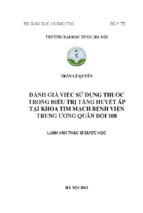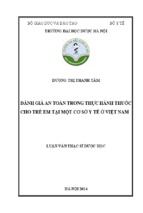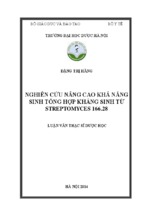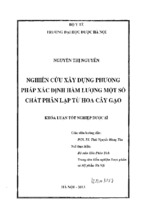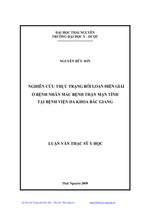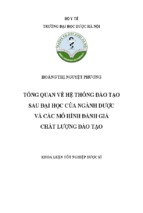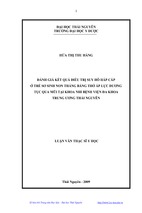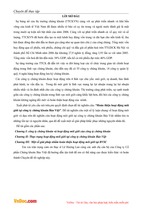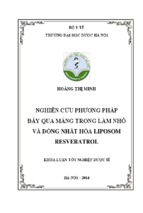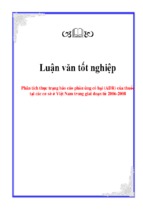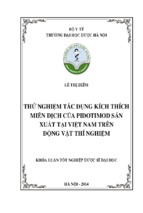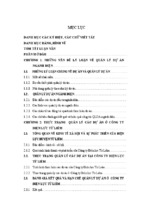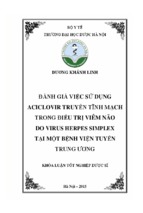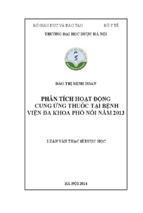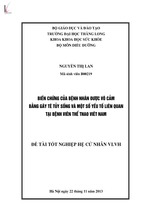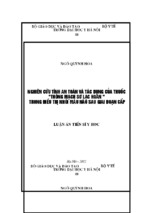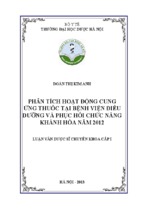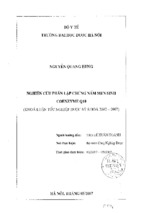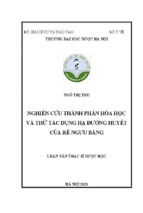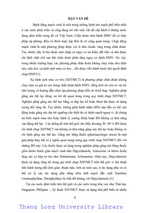A study on the impact of cost reduction measures in achieving the competitive
advantages in footwear industry
By
Pham Thuy Phuong
Graduation Project Submitted to the Department of Business Studies,
HELP University College, in Partial Fulfillment of the Requirements for
the Degree of Bachelor of Business (Accounting) Hons
April 2011
Declaration of originality and word count
DECLARATION
I hereby declare that the graduation project is based on my original work except for
quotations and citations which have been duly acknowledged. I also declare that it has
not been previously or concurrently submitted for any other course/degree at HELP
University College or other institutions. The word count is 10,399____ words.
_____________________
Date:
i
ACKNOWLEDGEMENTS
In order to complete this project, I must be grateful to the following people for
guiding me.
1. Ms. Sumathi: a teacher of HELP University College. She helps me understand
how to prepare a graduation project and what I should do and should not do in a
graduation project. She gives me many various sample topics to help me choose
and understand aspects and issues can be exited in accounting topics.
2. Ms. Shenbak: a teacher of HELP University College. She helps me find the way
to choose a topic of a graduation project. After I can choose some topics, she also
shows me what topic is easier for me to do and what issues I should consider in
this topic.
3. Mrs. Dao Thu Giang: a vice - director of Foreign Trade University. She helps me
understand what I must do in a graduation project. In each chapter, she defines
clearly how I should do and what aspects I should examine. She helps me
reexamine and check accounting information, tables and figures. She also shows
me what information I should focus on or not. After finishing this project, she
examines and considers the graduation project.
4. Ms. Ngo Hong Anh: an accountant of Thuong Dinh Shoes Company Ltd. She
gives me accounting information as well as financial data of two years ( 2009,
2010 ). Thank to these information, I can calculate and draw table and figure in
this project.
5. Mr. Le Van Duong: a manager of The Research and Development department of
Thuong Dinh Shoes Company Ltd. He gives me all old strategies which company
ii
used in the previous year 2009 and new strategies company will use in the next
year. He also gives me the objectives of company wants to achieve. Basing on
this, I can see and understand clearly the condition of company.
iii
ABSTRACT
A study on the impact of cost reduction measures in achieving the competitive
advantages in footwear industry
By
Pham Thuy Phuong
April 2011
Supervisor :
Nowadays, the world trends to globalize, organization not only considers the way
to maximize profit, but also cares its competitive advantage in the market. Because of
this, many companies find way to improve their competitive advantages in the opened
market as today. There are many methods to help company improve their competitive
advantages but the best way company can use is to reduce cost. Reducing cost can create
many opportunities for company to compete with other companies. In the market, one of
the most elements can attract customers most is price. The lower price is, the more
attractive company can gain. Especially, in Vietnam, the footwear industry become more
and more developed day by day. Thuong Dinh Shoes company is one of the most
developed shoes manufactures in Vietnam. It not only has expanded its market in
Vietnam but also in many foreign countries. As a result, I choose Thuong Dinh Company
Ltd as a specific example to analyze.
iv
TABLE OF CONTENTS
Declaration of originality and word count ........................................................................... i
DECLARATION................................................................................................................ i
ACKNOWLEDGEMENTS ............................................................................................. ii
ABSTRACT ...................................................................................................................... iv
TABLE OF CONTENTS ................................................................................................. v
LIST OF FIGURE ......................................................................................................... viii
LIST OF ABBREVIATIONS ......................................................................................... ix
Chapter 1 : INTRODUCTION ....................................................................................... ix
Chapter 2 : LITERATURE REVIEW ............................................................................ 5
2.1. Definition of accounting and its functions : ........................................................... 5
2.1.1. Definition of accounting .................................................................................. 5
2.1.2. The main functions of accounting ................................................................... 6
2.2. Definition of cost accounting and its function and objectives ................................ 7
2.2.1. Definition of cost accounting: ......................................................................... 7
2.2.2. Functions and objectives of cost accounting .................................................. 8
2.3. The nature of competition and competitive advantage ......................................... 10
2.3.1. The nature of competition.............................................................................. 10
2.3.2. The nature of competitive advantages ........................................................... 11
2.3.2.1. The basic nature of competitive advantage ............................................ 11
2.3.2.2. Sustaining Competitive Advantage........................................................ 12
2.3.2.4. Types of competitive advantage strategic .............................................. 14
v
2.4. The factors that can affect to the competitive advantage ...................................... 15
2.4.1. The suitable strategic to gain competitive advantage in the new environment
................................................................................................................................. 15
2.4.1.1. Porter’s five forces ................................................................................. 15
2.4.1.2. Low cost strategy ................................................................................... 17
Chapter 3 : METHODOLOGY ..................................................................................... 19
3.1. Characteristics in organization production and business activities of Thuong Dinh
Shoes Company Ltd ..................................................................................................... 19
3.2. The method to implement this project................................................................... 23
Chapter 4 : ANALYSIS .................................................................................................. 25
4.1. Analysis of the financial situation of the Thuong Dinh Company Ltd. in 2010: .. 25
4.1.1. Assessment of general financial situation of the Thuong Dinh Company Ltd.
in 2010 through the balance sheet accounts: .......................................................... 26
4.1.2. Analysis to capital for business operations situation: ................................... 29
4.1.3 Analysis of the relationship and the fluctuation of the items in the balance
sheet accounts: ......................................................................................................... 31
4.1.4. Analysis of the relationship and the changing situation of indicators in the
profit and loss statement: ........................................................................................ 34
4.1.5 Analysis of the situation of solvency of Thuong Dinh Company Ltd in 2010:
................................................................................................................................. 36
4.1.6. Analyze the effective and efficient of business performance of Thuong Dinh
Company Ltd............................................................................................................ 39
4.2. Analyze the use of materials Thuong Dinh Company Ltd in 201 ......................... 42
vi
4.2.1. Analysis of the major materials supply condition: ........................................ 43
4.2.2 Analysis of the major used materials .............................................................. 44
4.2.3. Analysis of the primarily reserve of material situation: ................................ 46
Chapter 5: CONLUSION ............................................................................................... 48
REFERENCES/ BIBLIOGRAPHY ...............................Error! Bookmark not defined.
vii
LIST OF FIGURE
Figure 2.1 : Types of competitive advantage strategies .................................................... 14
Firgue 2.2 : Porter's 5 Forces - Elements of Industry Structure ........................................ 17
Figure 3 : The general financial conditions of Thuong Dinh Shoes Company Ltd. ......... 20
Figure 4.1 : Assessment of general financial situation of the Thuong Dinh Company Ltd.
in 2010 through the balance sheet accounts (Unit: Vietnam Dong ) ................................ 26
Figure 4.2: Analysis to capital for business operations situation in year 2010................. 30
Figure 4.3 : Analysis of the relationship and the fluctuation of the items in the balance
sheet accounts: .................................................................................................................. 31
Figure 4.4 : The income statement of Thuong Dinh Shoes Company Ltd in 2010 .......... 35
Figure 4.5 : Analysis of the situation of solvency of Thuong Dinh Company Ltd in 2010
........................................................................................................................................... 37
Figure 4.6 : The analysis the using synthetic efficiency costs .......................................... 39
Figure 4.7 : The analysis of the effective business performance ...................................... 40
Figure 4.8: Analysis of the major materials supply condition ......................................... 43
Figure 4.9 : Analysis of the major used material in 2010 ................................................. 45
Figure 4.10 : Analysis of the primarily reserve of material situation in 2010 of Thuong
Dinh Company Ltd. .......................................................................................................... 46
viii
LIST OF ABBREVIATIONS
ASEAN
Association of South - East Asian Nation
APEC
Asia - Pacific Economic Co-operation
WTO
World Trade Organization
AFTA
ASEAN Free Trade Area
ix
Chapter 1 : INTRODUCTION
In the economy, the ultimate aim that each organization always cares most is how
to maximize the profit. But nowadays, when the world trends to globalize, organization
should consider its competitive advantage in the market because market today is very
board and there are more competitors in the market than before. In the past, each
organization was set up in its own country so the amount of competitors also were
limited. Organization only can compete with other organizations in its country. Now,
market is expanded, organization can set up many subsidiaries in many other different
countries over the world. It means this organization can face to many other organizations
coming from countries that its subsidiaries are operating in. As a result, the number of
competitors will increase noticeable. However, many organizations only pursue how to
maximize profit, they forget how to achieve the competitive advantage compete with
their competitors. The less competitive advantage organization has, the smaller the
organization’s market is. So, it also affects to the profit organization can earn. Although
profit is the last aim the company wants to get, a famous brand also is a important aim
that organizations also want to get. To become a famous brand, each company must
create trust to customer as well as create a higher competitive advantage than
competitors. In order to have a huge customer base, each company must create a good
quality product with the beautiful packing but the important factor is suitable price.
Almost all organizations compete with each other to create a suitable price. Normally, to
get a suitable price, organization must create strategies to cut cost. When cost is
decreased, the price of products will be lower and can create higher competitive
advantage. In general, in order to increase profit as well as increase competitive
1
advantage, companies need to use accounting, especial cost accounting, as the best
method. Besides, cost accounting has strong impacts on product cost. If product cost is
low, the price of organization’s product can decrease and it also helps the organization to
improve its competitive advantage.
Cost accounting is considered as a good method to help managers understand
clearly how much it costs to produce a product. Understanding the role of cost accounting
is important when the manager is trying to make a new product. The role of cost
accounting is to record, measures, and report information about cost of everything within
the organization to produce a product. Cost accounting is often used in the following
organization: manufacturing, merchandising, and service companies, governments,
universities, and not-for-profit and profit-making enterprise. But cost accounting is
considered as the best method when using in manufacturing. Besides, the role of cost
management helps an organization remain a competitive advantage to compete with other
competitors by creating more value at a lower cost. In order to create value at a lower
cost, cost accounting creates efficiently managing in an organization’s value chain of
activities, processes, and functions. Furthermore, the information that cost accounting
bring to organization is helpful for managers. So, if each manger know how to perform
functions of cost accounting in the new manufacturing accounting, manger can succeed
in running a new organization in new manufacturing environment. It also means
organization can create higher competitive advantage than other competitors.
Currently, Vietnam is in the progress of modernization. Recently, our economy is
opened and gets many innovative achievements. Vietnam is now a member of ASEAN,
APEC, WTO. Besides, Vietnam also signed a trade agreement with America and
2
Vietnam also joined AFTA in 2006. Thank to opened and integrative conditions,
Vietnam’s economy has developed fast. The more developing Vietnamese economy is,
the more improved Vietnamese society get. Besides, this also helps Vietnamese economy
can catch up with other country’s economy. However, everything always has two sides.
Although the integration of Vietnamese economy can bring many benefits, Vietnamese
economy also faces to many competitions from internal competitors as well as external
competitors. Day by day, these competitions become more and more severe. So, in order
to exit in this market today, the improvement of competitive advantage of each company
plays an vital role. To put it in other way, the ability to improve organization’ s
competitive advantage not only has a strong influence to the survival and development of
enterprises in particular, it but also has impacted on the economic growth of the country
in general. Therefore, I think the competitive advantage of organization in market should
be considered carefully because organization not only manufacture and sell products and
services in its own country, it also manufacture and sell product and service over the
world. If an organization can remain or has a higher competitive advantage than
competitors, this organization find a right strategy to follow. And the organization can
gain competitive advantage in market, it means the organization have a stable stand in
market and is known as by many people over the world. Many companies lose their
competitive advantages so they also lose many customers to competitors. Even this can
make these company shut down in market. This proves that competitive advantages play
an important role in existing in market when our economy trends to globalize.
In Vietnam, when the economy is opened, many branches expand and improve
fast. But we cannot ignore that footwear industry developed and improved fast in recent
3
years. It can be said that footwear industry in Vietnam has an obvious advance.
Vietnamese shoes brands is not only known in its own country, it is also known broader
in other countries than before. Instead of importing shoes from foreign countries to use,
Vietnam can manufacture shoes by itself to serve its own customers. Furthermore,
Vietnam can export shoes to foreign country. However, the amount of shoes sold in
Vietnam and foreign countries is not large. This can be caused by the lack of competitive
advantages of Vietnamese footwear industry in market. Competitors from other countries
can give customers many different choices about product with many types of price while
Vietnam still face many problems about price of shoes. They cannot give customers
suitable price of each shoes they produce. This can come from the higher cost that
company must bear. Because of these issue, Vietnam has met many difficulties in
creating competitive advantage in the new environment compare with other competitors.
In Vietnam, there are many shoe manufactures exists in market and because of limitation
of this project, I will chose a manufacture has the best oblivious advance in this industry
as an example, is Thuong Dinh Ltd Company. After realizing this issue, I perform to
study “ the impact of cost reduction measures in achieving the competitive advantages in
footwear industry, especial in Thuong Dinh Ltd Company”.
My project is divided into five main parts.
The first part : Introduction
The second part : Literature review
The third part : Methodology
The fourth part : Analysis
The final part : Conclusion
4
Chapter 2 : LITERATURE REVIEW
2.1. Definition of accounting and its functions :
Before examining what cost accounting is and its function, we should understand
definition as well as functions of accounting clearly first.
2.1.1. Definition of accounting
In general, accounting is a process of collecting, recording, reporting information.
To go into details, accounting is also considered as a set of practice and body of
knowledge that its primary tasks are recording transaction, keeping financial record,
reporting and analyzing financial information to managers, and sometimes it give some
advices on taxation matters. It can be identified profit or loss for a pass and current
period, and it also show the value and nature of a firm's assets, liabilities and owners'
equity. Besides, accounting provides information for managers about the available
resources in a firm, the means resources, and the results company can achieve when they
use accounting information. Furthermore, it helps organization create important
decisions. It also helps managers, investors, regulators, lenders and public know whether
should invest in this organization or not because accounting information can give them
account can show the current condition of this organization. Account can identify to help
them see that operation of organization is good or bad. It also reports to them the ability
of organization in creating profit. To put it in other way, accounting can show clearly
whether this company is making profit or suffers heavy loss. Furthermore, accounting
system has an strong impact on management across organizations, manufactures,
department or even economic society of many countries over the world because
accounting information help manager realize and find way to earn profit which is
5
considered as the most interest daily of each company. In order to make profit and create
competitive advantages to help companies exist in the severe market today, each manager
should encapsulate all accounting information to unify in a general accounting system. It
is useful for manager as well as companies.
2.1.2. The main functions of accounting
Accounting always
plays a vital role in organization’s business. Almost all
companies which are existing in the market today, need at least an accountants.
Nowadays, accounting becomes more and more important because the functions of
accounting help companies many things in operating its business. Accounting has many
functions but there are four main functions that are known by people most are recording
and keeping information, protecting business property, meeting legal requirement and
communicating.
The primary function of accounting is to keep, record and collect systematic
financial transactions as well as financial information in order to help accountants and
managers can prepare final financial and accounting statements. The second function is to
protect the property of businesses. In each organization, it will has many properties are
unjustified and unwanted. In order to avoid the rash using of these properties from people
in company, accountants and managers must set up or design a suitable accounting
system to protect these properties. If these properties are out of control, they can cause
many damages for companies, such as the loss amount that company do not know the
reason. The third function is to meet legal requirement. Each country over the world must
be subject to the regulation of its own government. Business of each country is not also
an exception. Each company must be bound by legal requirements that the government
6
creates to control its economy and business. Under the provision or Act of law, each
company want to run in market, it must prepare five various financial statement, such as
income tax return and returns for sale tax, completely every years or every times
government requires. So, accountings is considered as a basic of information to help
managers prepare these statements. Finally, the most important function of accounting is
to communicate the results of firms because accounting is considered as a language to
communicate between people inside company and people outside company. In a firm, it
has many parties who care the final operating result of a firm, are owners, creditors,
government, employees. They always want to know that after a long time company
operates, whether its operation is good or not. Then, they can decide to make decision for
company and for theirs own interest.
2.2. Definition of cost accounting and its function and objectives
2.2.1. Definition of cost accounting:
“Cost accounting is considered as an expanded phase of the general financial
accounting of a business concern which provides management promptly with the cost of
producing or selling each product or of rendering a particular service". To put it in other
way, cost accounting is a step further of financial accounting. in which cost of
manufacturing is identified, not at the time of accounting period but at the time when the
product is manufactured. In simple words, costing is a systematic procedure for
determining the unit cost of output produced or services rendered. It provides for
organization an analysis of the consumption which enables the managers to know total
cost. In summary, cost accounting is “the process of accounting for cost, which begins
with regarding and classifying of incomes and expenditures and ends with the preparation
7
of periodical statements and reports for ascertaining and controlling costs”. And cost
accounting can be determined as the process of measuring, analyzing, computing, and
reporting the cost, profitability and performance of operations.
To see it in other aspect, cost accounting is considered as one of the best method to
provide information for management accounting and financial accounting. Cost
accounting is used to measure, analyzes and report financial as well as non-financial
information that concern to the costs acquiring or using resources in an organization.
Normally, cost accounting specializes in controlling and calculating cost of product.
2.2.2. Functions and objectives of cost accounting
The role of cost accounting is to record, measures, and report information about
cost of everything within the organization to produce a product. So, in order to know how
cost accounting can help organizations or manufactures control cost of material of
products, organizations should consider carefully the functions and objective of cost
accounting.
The primary objectives and function of cost accounting is to ascertain and
estimate cost of product for different products, job, and services. Cost accounting
evaluate costs of production and manufacturing process by applying different methods of
cost accounting, such as job costing, process operation costing, contract costing etc.
according to the suitability and needs of the organization.
Secondly, cost accounting can determine selling price that cost accounting
provides detailed information about the composition of total cost for determining action
of the selling price of the product or service under different conditions. Besides,
accounting cost can create a fixation of selling prices. It also helps organization to find
8
out cost of production and fixation of selling prices of the product, process job and
operation.
Thirdly, cost accounting is used as a measure to evaluate increasing efficiencycost accounting that involves a study of various operations used in manufacturing a
product or providing service. The study facilitates measuring of efficiency of
organization or a whole as well as of departments besides devising means of increasing
efficiency.
Furthermore, cost accounting can create control. Cost accounting aims is
improving the efficiency by controlling and reducing cost. Budgetary control and
standard costing are important techniques used control costs. Besides, cost accounting is
controlled by setting standards and compared with the actual. The deviation between
them are identified and if required necessary controlling measures may be taken.
Cost accounting can facilitate preparations of financial and other statements
because it provides statements at such short intervals as the management may require. In
order to operate business at high level of efficiency it is essential on the part of the
management to have a frequent review of products, sales and operating result. Cost
accounting produces daily weekly and monthly volumes of units produced, accumulated
cost together with appropriate analysis.
Nowadays, cost accounting is fully developed cost accounting system that
provides ready information regarding stock of raw material, work-in-progress and
finished goods, facilitates the preparation of financial and other statements. And it also
provides basis for operating policy. Cost accounting helps manager manage the
9
formulating operative policies. As a result, cost accounting provides useful information
for organizations or manufactures.
2.3. The nature of competition and competitive advantage
2.3.1. The nature of competition
The concept of competition that has come from dominate economics, is static.
Competition is considered as affairs. It is not as a process. Competition does not deal
with qualitative change. The difference between outputs of firm creates a distortion with
respect to the model of perfect competition.
During the history of economic, many shortcomings have already been showed
and discussed by a number of authors. In the economics literature, there are two
shortcomings which have been addressed separately, while they can be both be jointly
surmounted by means of a generalized definition of competition. In general, competition
occurs between firms that produce similar outputs, such as products or services. Even
when these outputs are material goods, they are sold for the services they supply to their
users. Thus, competition will exist whenever firms produce either similar services, or
products supplying similar services. To make it simple, a market simply defined is an
area within which a group of seller compete against other group seller to gain a common
group of buyers. In some sense, all products are in the same market as all compete for a
common pool of money held by consumers.
In this analysis, an industrial sector is considered as a population of firms
producing a differentiated product. In this industry, competition exits not only from
within an industry, but also from other sectors supplying some common services. For
example, railway companies, bus companies and airlines produce comparable transport
10
- Xem thêm -

